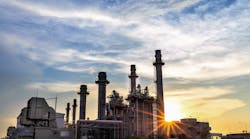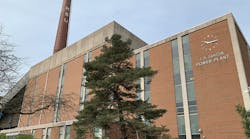The Energy & Environmental Research Center (EERC) at the University of North Dakota is leading a project to develop an efficient renewable electricity technology for coffee-processing plants.
The EERC is working with Wynntryst LLC, an energy solutions company based in South Burlington, Vt., to develop a gasification power system to utilize the waste from a coffee-processing plant to produce energy.
The project specifically focuses on the waste from the Green Mountain Coffee Roasters (GMCR) plant. GMCR is a Wynntryst client and is best known for its Keurig brand of individual coffee cups. The company also distributes other coffee products to companies around the world, including Starbucks and McDonald”s. The waste stream includes coffee residues, plastic packaging, paper, cloth or burlap, and plastic cups.
“This project is an extension of work performed by the EERC for NASA, which explored the conversion of waste from a space station and future Martian and lunar bases into heat and power,” said Deputy Associate Director for Research Chris Zygarlicke, in a prepared statement. “This project will similarly utilize a mostly renewable and bio-based waste and convert it into electricity for the coffee industry.”
“The first step of the project is to demonstrate that we can gasify the complex mixture of waste and produce clean synthetic gas, or syngas, by utilizing the EERC”s novel advanced fixed-bed gasifier (AFBG) system on the biomass-residue mixture,” said Project Manager and Research Scientist Nikhil Patel, in a prepared statement.
The syngas will then either be utilized in an internal combustion engine (or a fuel cell) for efficient production of electricity and heat or be converted to high-value biofuels or chemicals. The pilot-scale tests will evaluate the quality of syngas that can be produced from the Green Mountain waste. EERC researchers will fine-tune the technology to meet the highest environmental standards possible.
“Over the years, the EERC has developed and tested numerous small gasifier systems like this on a variety of biomass feedstocks,” Zygarlicke said. “The EERC system has already produced power by gasifying forest residues, railroad tie chips, turkey litter, and other biomass feedstocks and burning the produced syngas in an on-site engine generator. The coffee industry residues will be similarly tested.”
The EERC says it will use the outcome of the pilot-scale efforts to propose a full-scale commercial demonstration system for installation at various Green Mountain sites.
The EERC is developing smaller-scale distributed gasification technologies as a means for converting biomass to renewable energy. “This project is a perfect example of the EERC”s ability to adapt to changing market needs, as more and more industries, manufacturers, and municipalities look for ways to utilize modest quantities of available biomass residues for energy,” said EERC Director Gerald Groenewold, in a prepared statement.

